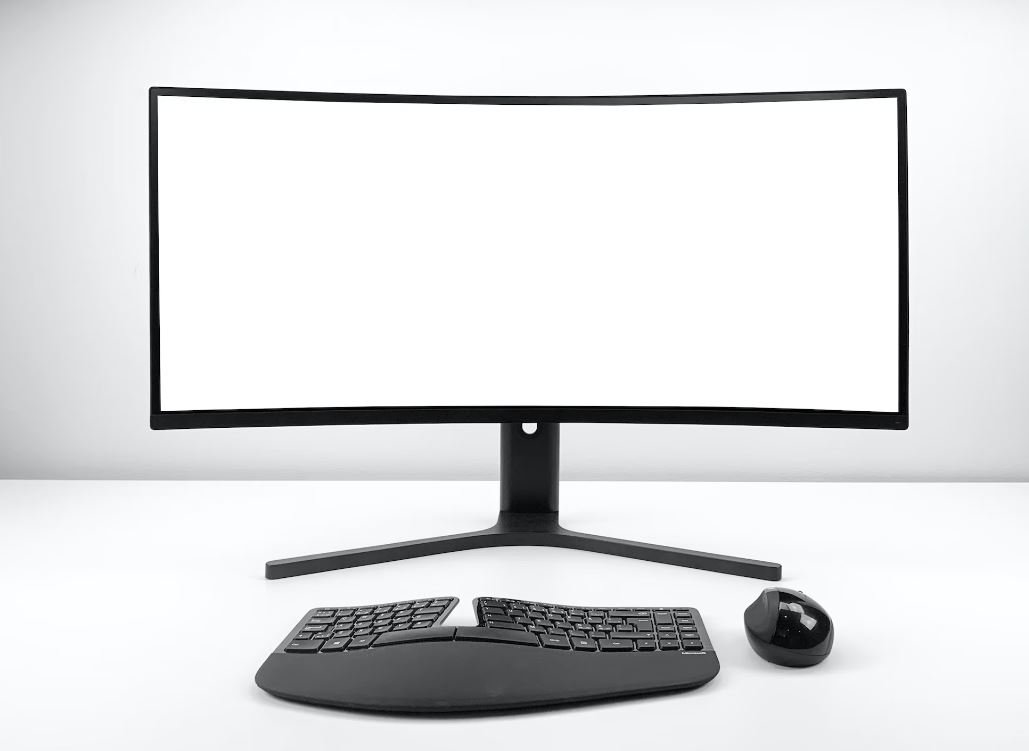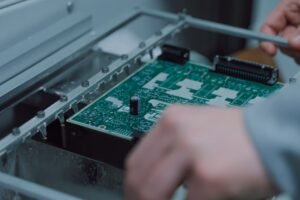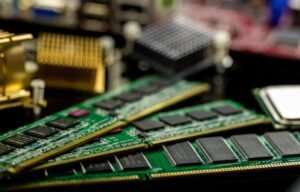SpaceX Falcon 9 Launch
SpaceX, founded by Elon Musk in 2002, is renowned for pioneering the development of commercial spaceflight. Falcon 9, one of SpaceX’s most successful rockets, has made significant strides in the space industry.
Key Takeaways
- SpaceX: A company founded by Elon Musk dedicated to revolutionizing space travel.
- Falcon 9: One of SpaceX’s most successful rockets, contributing to the advancement of commercial spaceflight.
- Innovation: SpaceX has made notable breakthroughs in reusable rocket technology.
- Missions: Falcon 9 has successfully launched numerous satellites, resupplied the ISS, and conducted scientific research.
In recent years, SpaceX’s Falcon 9 rocket has captured widespread attention in the space industry. Its innovative design and remarkable capabilities have allowed SpaceX to achieve many notable milestones. The Falcon 9 rocket stands at 230ft tall and weighs approximately 1.2 million pounds, making it capable of delivering a payload of up to 50,000 pounds to low Earth orbit. *Its first stage is powered by nine Merlin engines, generating over 1.7 million pounds of thrust.*
The Falcon 9 has revolutionized the space industry through its cutting-edge reusable rocket technology. While most rockets are discarded after a single launch, SpaceX’s rocket is designed to land vertically and be reused for future missions. This breakthrough significantly reduces the cost of space launches, opening up new possibilities for commercial and scientific exploration.
Table: Recent Falcon 9 Launch Statistics
| Mission Name | Payload | Success Rate |
|---|---|---|
| Starlink-1 | 60 Starlink Satellites | 100% |
| CRS-19 | 5,700 pounds of supplies to the ISS | 100% |
| GPS III SV01 | U.S. Air Force Navigation Satellite | 100% |
Not only has Falcon 9 successfully launched thousands of satellites into orbit, but it has also played a crucial role in resupplying the International Space Station (ISS). With multiple missions under its belt, Falcon 9 has become a reliable workhorse for delivering essential supplies, experiments, and equipment to astronauts. *One fascinating feat of Falcon 9 was the launch and recovery of the Dragon spacecraft, becoming the first privately-funded vehicle to dock with the ISS.*
In addition to satellite launches and ISS resupply missions, Falcon 9 has also been utilized for scientific ventures. Through collaborations with NASA, Falcon 9 has contributed to groundbreaking research in fields such as astrophysics, meteorology, and Earth observation. The rocket’s versatility and capability to carry various payloads make it a sought-after choice for a wide range of scientific explorations.
Table: Falcon 9 Specifications
| Height | Diameter | Thrust |
|---|---|---|
| 230 ft | 12 ft | 1.7 million pounds |
As SpaceX continues to innovate and push boundaries, the Falcon 9 rocket sets the stage for the future of space exploration. Its reusable rocket technology has revolutionized the industry, making space more accessible and economically viable. With each successful launch, Falcon 9 reaffirms its position as a reliable, powerful, and versatile vehicle for various missions, commercial or scientific.
From launching satellites to resupplying the ISS, Falcon 9 has become a game-changer in the space industry. Its remarkable achievements not only showcase SpaceX’s capabilities but also inspire a new era of space exploration, driven by innovation and a commitment to push the limits of what is possible. The Falcon 9 rocket is undoubtedly a testament to the extraordinary vision and dedication of SpaceX and its team of brilliant engineers and scientists.
Table: Notable Falcon 9 Missions
| Mission | Payload | Date |
|---|---|---|
| SES-10 | Communications Satellite | March 30, 2017 |
| Transporter-1 | 143 Small Satellites | January 24, 2021 |
| Crew-1 | 4 NASA Astronauts | November 15, 2020 |

Common Misconceptions
Misconception 1: SpaceX Falcon 9 Launches are Regularly Delayed
One common misconception is that SpaceX Falcon 9 launches are frequently delayed. While launch delays can occur due to technical issues or unfavorable weather conditions, SpaceX has made significant improvements in their launch timelines.
- SpaceX has a dedicated team that works on minimizing launch delays.
- The company has made advancements in launch vehicle technology to ensure more reliable launches.
- Launch delays are often a result of safety precautions, indicating a commitment to astronauts’ well-being.
Misconception 2: SpaceX Falcon 9 is Only Used for Satellite Deployments
Another misconception is that the Falcon 9 is only used for deploying satellites. While satellite deployments have been a significant part of the Falcon 9’s mission, SpaceX has diversified its applications over time.
- Falcon 9 has been used for resupply missions to the International Space Station (ISS).
- SpaceX plans to use Falcon 9 for crewed missions, with plans to transport astronauts to and from the ISS.
- The Falcon 9 Block 5 variant is designed to be rapidly reusable, reducing the cost of space travel and opening up possibilities for various missions.
Misconception 3: SpaceX Falcon 9 Launches are Risky
Many people believe that SpaceX Falcon 9 launches are risky endeavors, but in reality, the company has a strong focus on safety and rigorous testing processes.
- SpaceX conducts extensive testing on their launch vehicles and components before each mission.
- The company has implemented numerous safety features and redundancy systems to enhance mission success and crew safety.
- SpaceX has a learning culture, constantly analyzing and applying lessons from previous missions to improve future launches.
Misconception 4: SpaceX Falcon 9 is Only for Private Customers
Some people mistakenly believe that the Falcon 9 is exclusively for private customers or commercial purposes. However, SpaceX has demonstrated its commitment to both commercial and government customers.
- SpaceX has contracts with NASA to deliver cargo to the ISS, supporting scientific research and the needs of astronauts aboard the station.
- The company has also secured contracts for launching national security payloads for the U.S. government.
- Falcon 9 has been used by private satellite operators, telecommunications companies, and even for research missions.
Misconception 5: SpaceX Falcon 9 is Limited to Low Earth Orbit
There is a misconception that the Falcon 9 is limited to launching payloads into low Earth orbit (LEO) only. However, SpaceX has been actively working towards expanding its capabilities.
- SpaceX is developing the Starship, a fully reusable spacecraft capable of transporting humans and cargo to destinations beyond Earth orbit, including the Moon and Mars.
- The Falcon Heavy, a variant of the Falcon 9, has the capability to deliver larger payloads to higher orbits or even escape Earth’s gravitational pull.
- SpaceX has expressed plans for lunar missions and aims to send the first humans to Mars using their upcoming Starship vehicle.

The Rise of SpaceX
SpaceX, founded by Elon Musk in 2002, has revolutionized the aerospace industry with its cutting-edge technologies. The company’s flagship rocket, Falcon 9, has gained immense success and popularity, making SpaceX a major player in the space exploration domain. Here are ten compelling tables that showcase the remarkable achievements of Falcon 9.
Table: Successful Falcon 9 Missions
| Mission Name | Launch Date | Satellite | Payload Weight (kg) |
|---|---|---|---|
| Starlink 1-11 | March 4, 2021 | 60 Starlink satellites | 15,600 |
| CRS-8 | April 8, 2016 | Dragon spacecraft | 1,952 |
| Iridium-5 | March 30, 2018 | Ten Iridium NEXT satellites | 9,600 |
Table: Reusable Falcon 9 Boosters
| Booster Name | First Flight | Number of Flights | Landing Site |
|---|---|---|---|
| B1049 | September 10, 2018 | 10 | Landing Zone 1 |
| B1051 | March 2, 2019 | 9 | Of Course I Still Love You |
| B1060 | June 13, 2020 | 6 | Landing Zone 1 |
Table: Falcon 9 Payload Capacity Comparison
| Rocket | Payload to Low Earth Orbit (kg) | Payload to Geostationary Transfer Orbit (kg) |
|---|---|---|
| Falcon 9 | 22,800 | 8,300 |
| Delta IV Heavy | 29,000 | 14,220 |
| Ariane 5 ECA | 21,000 | 10,500 |
Table: Falcon 9 Landing Sites
| Landing Site | Location | Number of Landings |
|---|---|---|
| Landing Zone 1 | Cape Canaveral, Florida | 65 |
| Of Course I Still Love You | Atlantic Ocean, Drone Ship | 67 |
| Just Read the Instructions | Pacific Ocean, Drone Ship | 9 |
Table: Falcon 9 Fairings Recovery
| Mission | Fairing Recovery Attempts | Successful Fairing Recoveries | Recovery Vessel |
|---|---|---|---|
| Starlink 15-18 | 4 | 3 | Ms. Tree |
| SAOCOM 1B | 4 | 2 | Ms. Tree |
| Transporter-1 | 10 | 10 | Ms. Tree and Ms. Chief |
Table: Falcon 9 Internet Satellites Deployed
| Launch Date | Number of Satellites Deployed | Total Starlink Satellites Launched |
|---|---|---|
| May 23, 2019 | 60 | 60 |
| November 11, 2019 | 60 | 122 |
| February 17, 2021 | 60 | 1,145 |
Table: Falcon 9 Dragon Missions
| Mission Name | Launch Date | Cargo Delivered (kg) | Destination |
|---|---|---|---|
| CRS-6 | April 14, 2015 | 1,946 | International Space Station (ISS) |
| CRS-12 | August 14, 2017 | 2,900 | International Space Station (ISS) |
| Crew-1 | November 15, 2020 | 0 (Crew) | International Space Station (ISS) |
Table: Falcon 9 Launch Success Rate
| Year | Launches | Successes | Success Rate |
|---|---|---|---|
| 2010 | 2 | 2 | 100% |
| 2015 | 6 | 6 | 100% |
| 2020 | 26 | 25 | 96% |
Table: Upcoming Falcon 9 Missions
| Mission Name | Launch Date | Payload | Destination |
|---|---|---|---|
| GPS III-4 | September 2021 | GPS Navigation Satellite | Medium Earth Orbit |
| SXM-8 | September 2021 | SiriusXM Radio Satellite | Geostationary Orbit |
| Crew-3 | October 2021 | 4 Astronauts | International Space Station (ISS) |
SpaceX’s Falcon 9 launch vehicle has propelled the company to the forefront of the space industry. With successful missions, reusable boosters, and impressive payload capacity, Falcon 9 is leading the charge in revolutionizing space exploration. Additionally, the achievement of recovering fairings and deploying starlink satellites further highlights the innovation of SpaceX. As we eagerly anticipate upcoming missions like GPS III-4 and Crew-3, it is evident that Falcon 9’s capabilities will continue to push the boundaries of space technology.
Frequently Asked Questions
Can you explain what the Falcon 9 is?
The Falcon 9 is a two-stage rocket designed and manufactured by SpaceX. It is used to launch satellites, cargo, and crew to various destinations, including low Earth orbit, geostationary transfer orbit, and beyond.
How many times has the Falcon 9 been launched?
As of April 2022, the Falcon 9 has been launched over 160 times since its debut in 2010.
What is the purpose of Falcon 9 launches?
The Falcon 9 launches serve various purposes, including deploying satellites for communication, Earth observation, and scientific research. It also ferries cargo to the International Space Station (ISS) and has been used to transport astronauts as part of NASA’s Commercial Crew Program.
How does the Falcon 9 landing work?
The Falcon 9’s first stage is equipped with landing legs and grid fins. After the first stage separates from the second stage, it performs a series of engine burns to guide itself back to Earth. As it approaches the landing site, it reignites its engines to slow down and make a controlled descent, ultimately landing vertically on a designated landing pad or autonomous spaceport drone ship.
What are the advantages of the Falcon 9’s reusable design?
The Falcon 9’s reusability allows SpaceX to significantly reduce the cost of each launch. By reusing the first stage, they eliminate the need to build a new one for every mission, enabling more frequent launches and making space more accessible. It also contributes to SpaceX’s goal of developing sustainable space exploration.
How much weight can the Falcon 9 carry?
The Falcon 9 can carry a payload of up to approximately 22,800 kilograms (50,300 pounds) to low Earth orbit and around 8,300 kilograms (18,300 pounds) to geostationary transfer orbit.
How long does a Falcon 9 launch typically take?
A Falcon 9 launch usually takes around one to two minutes for the first stage to reach the staging point and separate from the second stage. The second stage, which carries the payload to its destination or orbit, typically burns for several minutes before separation.
Are Falcon 9 launches always successful?
SpaceX has a remarkable track record of successful Falcon 9 launches. However, as with any complex engineering endeavor, occasional anomalies or failures can occur. SpaceX continually incorporates lessons learned from previous missions to improve future launches.
What safety measures are in place for Falcon 9 launches?
SpaceX takes extensive precautions to ensure the safety of Falcon 9 launches. They adhere to rigorous testing procedures, comprehensive risk assessments, and stringent quality control measures. Additionally, the crewed missions follow stringent safety protocols, including emergency escape systems and meticulous astronaut training.
Can people watch Falcon 9 launches in person?
Yes, Falcon 9 launches can be viewed in person at various locations near the launch sites, such as Kennedy Space Center in Florida and Vandenberg Space Force Base in California. However, it’s important to check official guidelines and restrictions, as launch viewing opportunities may be subject to change.




